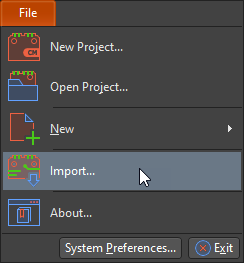How To Design Internet Of Things Devices: Make Them Simple and Universal
Table of Contents
Greed is a natural human tendency that promises much but often leaves us with nothing. My father grew up in a gold rich area of Africa. A miner once told my father and his friends that they could keep as much of his gold as they could carry by hand for 5 miles. My father and his friends each took their turns, but all of them tried to carry too much and couldn’t even make it one mile. The temptation to attempt too much, or keep too much to oneself, has led to the failure of many electronic devices. Products like the Juicero juicer and many of Sony’s proprietary gizmos and formats have fallen by the wayside. They have been superseded by electronics that are intuitive for consumers and are widely applicable. You will be tempted to design proprietary devices or systems for the Internet of Things (IoT), here’s why you shouldn’t.
Sony’s Proprietary Missteps
Media companies like Sony are particularly fond of proprietary products. This is because they often believe that media must essentially be proprietary in order to make money. Efforts to reduce media pirating such as proprietary music formats have bitten Sony in the past, leading to exclusion of their music from popular MP3 players.
This mindset has occasionally extended into physical devices, such as their 90’s era MemoryStick. This memory was used in a plethora of Sony devices and was intended to bring in additional revenue. The only problem was that it was proprietary and incompatible with any other devices coming out on the market. Companies often have a tendency to want to make everything about their product proprietary, not realizing that the features they expect to make money will make consumers turn to other devices.
We all remember the Walkman, what about Sony’s answer to the average MP3 Player? Editorial credit: Ned Snowman / Shutterstock.com
Exclusivity Rarely Works
There are a few companies who have had success with proprietary formats. Apple, for example, has refused to use micro USB connects to their phones, preferring to design their own Lightning connector instead. Everyone knows what the Lightning cables look like, but how many normal people remember FireWire? Apple also backed that, and it has since faded into obscurity. There’s another company that is now showing us what happens when you try to emulate Apple in the IoT domain, Juicero.
I highlighted Juciero’s juicer in another article about well designed IoT devices that were doomed to fail. This machine had all the hallmarks of Apple’s products. It was well made, intricately designed, and highly proprietary. The juicer only used proprietary juice bags, that users eventually found they could simply squeeze by hand. The discovery of this design flaw may have turned out to be the nail in the coffin for the already declining company, which has now closed its doors.
Now, because of Juicero’s overly proprietary approach to juice, people who bought the machine will no longer be able to use it. As a result, Juicero is now offering a refund to all users in the next 90 days. Imagine designing a product that fails and then having to refund all purchases. This device would never have been a success story, but if consumers could still use the product after the company failed they may not have to give everyone their money back.
Apple is one of the few companies who has been successful with a proprietary ecosystem. Editorial credit: Alexey Boldin / Shutterstock.com
How to Avoid Failure
There is an easy way to avoid going the way of FireWire or Juicero, make your product simple and universal. You can write your own success story by following these principles when designing.
Remember Sony’s failure to compete with MP3 players? I don’t think any of us doubted that Sony could make a great music player after the success of the Walkman. However, when they decided to use their own file formats they excluded themselves from the market. Now, in IoT, we’re seeing the same phenomenon with things like proprietary charging systems. No one wants to keep track of another cord or charger. You’re not Apple, make your device convenient for your consumers or they will not use it.
Another way IoT companies are trying to make extra money is by designing smart home systems that use proprietary sensors and peripherals or wireless systems. I will personally never buy a smart home system that cannot be integrated with general peripherals. That’s because the company that makes the best smart home hub, may not make the best multi-sensor platforms. If an electrical engineer wants a simple system that is easily extensible, you can be darn sure the average user wants one as well.
IoT is a large sector that is forecasted to keep growing. We all want a slice of that pie, but if we get too greedy and try to get a huge piece with lots of proprietary devices we may end up giving out refunds. Let’s learn from the past and design devices and systems that are flexible enough to last in the disruptive IoT market.
No matter what type of IoT product you're designing, you’ll need EDA software like that has tons of great features and can help you take your designs to the next level. When you need to access an easy-to-use PCB layout tool that includes everything needed to build high-quality manufacturable circuit boards, look no further than CircuitMaker. In addition to easy-to-use PCB design software, all CircuitMaker users have access to a personal workspace on the Altium 365 platform. You can upload and store your design data in the cloud, and you can easily view your projects via your web browser in a secure platform.
Start using CircuitMaker today and stay tuned for the new CircuitMaker Pro from Altium.

















